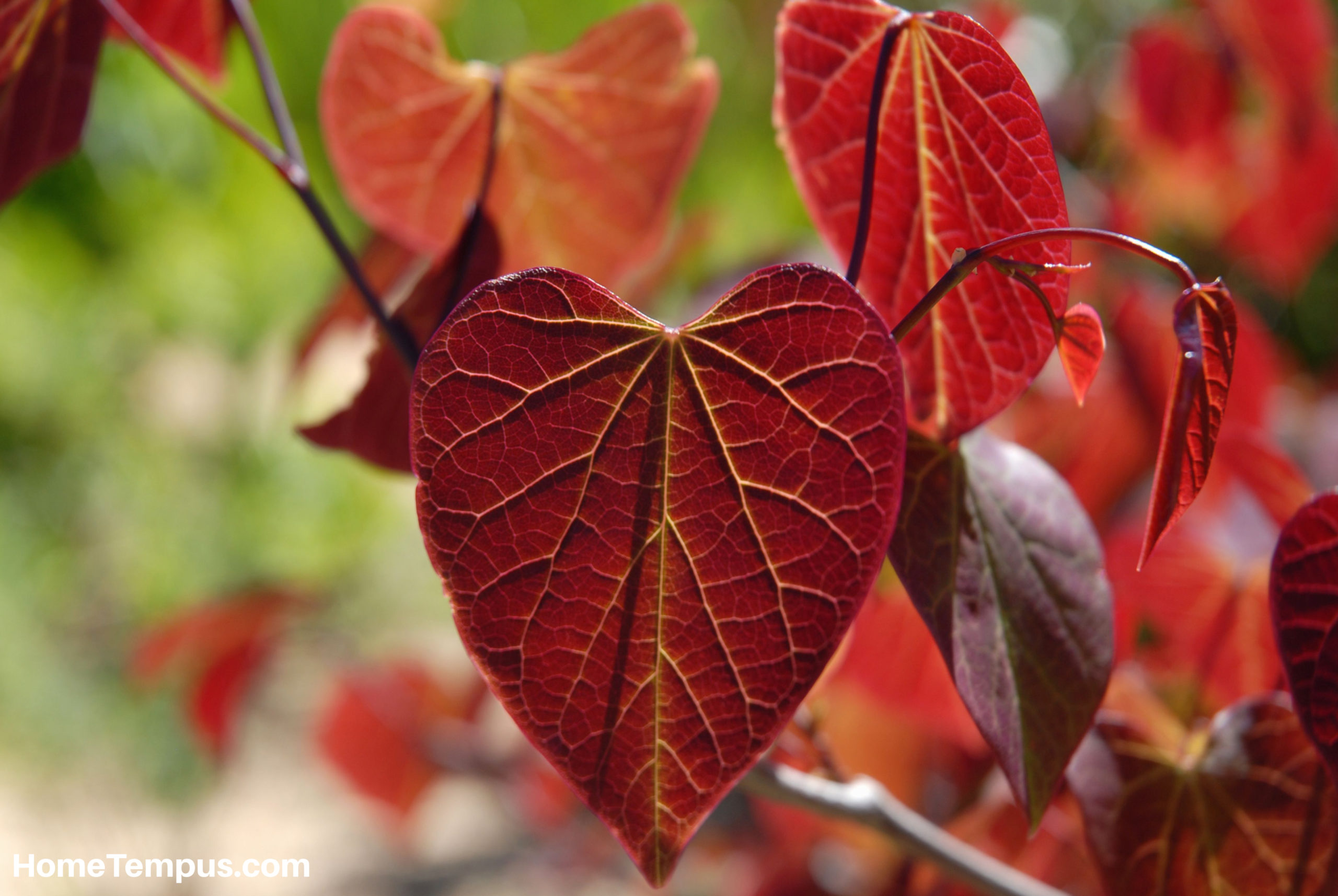Mexican flowers are just like Mexico: colourful, diverse, resilient and very beautiful. Stretching between the Pacific Ocean and the Caribbean Sea, Mexico is a blend of diverse landscapes: coastal plains, rugged mountains and vast deserts.
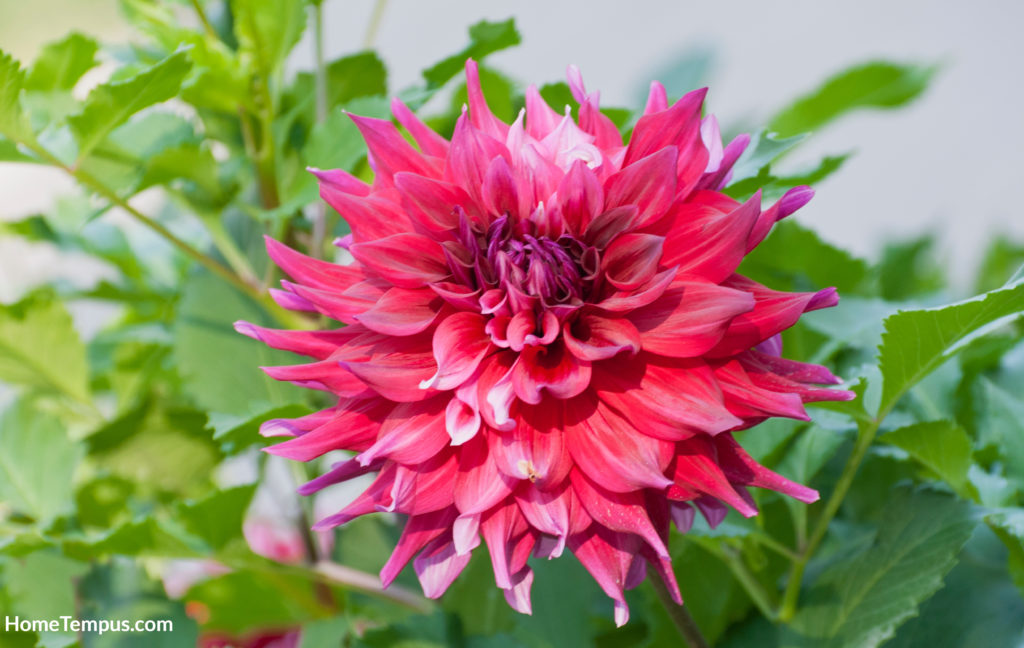
The landscapes and their climate dictate what kinds of flowers thrive there. And from the natural landscapes, Mexican flowers are popping up in small and big gardens, in the parks and cemeteries.
Mexican flowers are very much part of the country’s culture and identity. Here are just some of the flowers that are native to Mexico that you will see as you travel through this amazing country.
Cactus
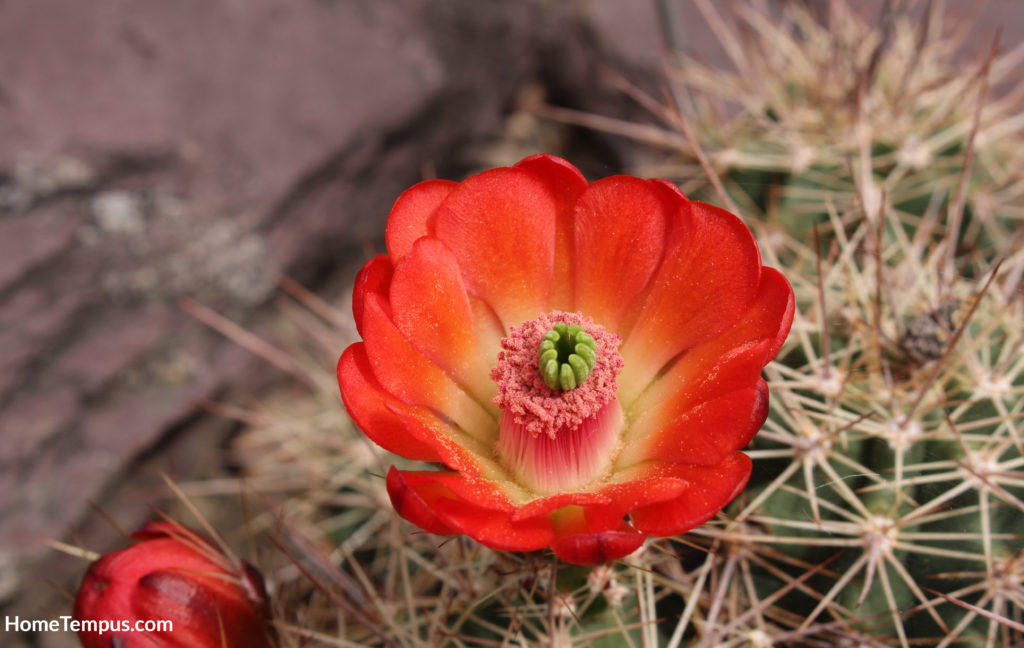
For some reason, the cactus is easily associated with Mexico. Even in cartoons. There are over 150 varieties of this large plant family that are native to Mexico.
Cactus is very much a symbol of Mexico, present everywhere, even in Mexican dishes. Prickly pear cactus, with its large fruit, is probably the best known, but Echinocereus produces the most beautiful large flowers that range from yellow and purple to red and pink.
It is in fact a genus with about 70 species of cacti. Cactus, like most cacti, loves rocky, sunny and bright spaces where it grows its beautiful flowers that turn into edible fruits.
Guzmania
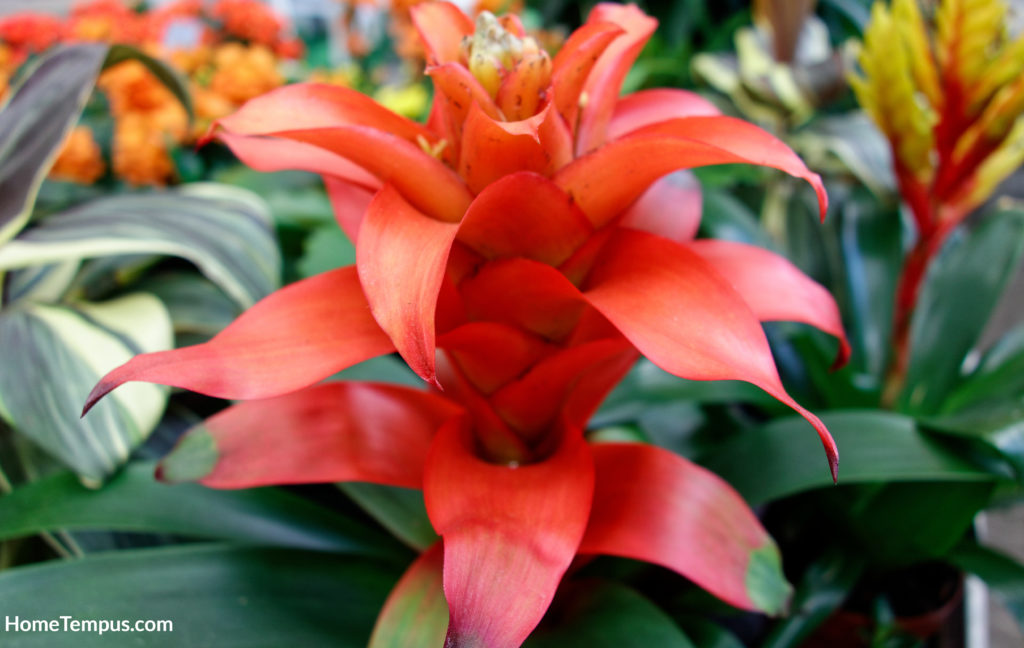
Guzmanias are perennial plants in the bromeliad family native to Mexico, Central and South America. There are over 120 different guzmania plants.
They are epiphytic – they attach to trees with their roots and do not need soil. Striking bracts that look like flowers grow from the plant’s center.
They are sometimes red, orange, yellow, or deep purple. Leaves are dark green and thin. The leaves collect rain and like other bromeliads guzmania gets its nurishment from the decomposing plant matter.
Mexican Sunflower (Tithonia Diversifolia)
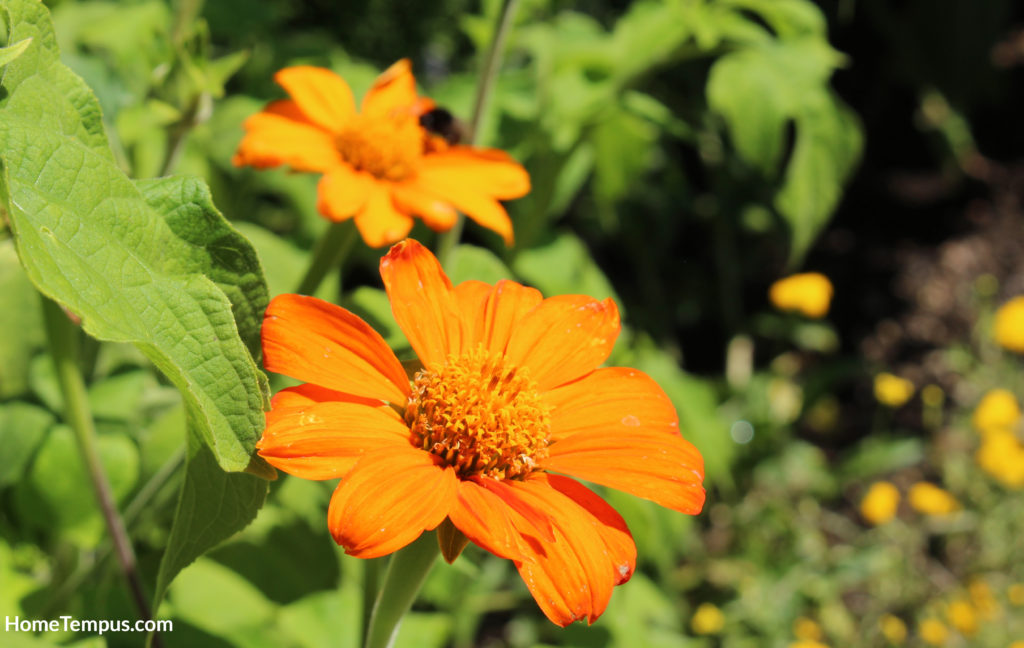
Mexican sunflower looks more like a small daisy or a chamomile flower than what we know as a sunflower. This annual bush has lovely small yellow or red flowers that bloom in profusion, sometimes producing more than 100 flowers on each bush.
Flowers attract butterflies and bees and bloom throughout the summer to early autumn.
Recommended Reading
Flowers That Start with C | 35 Beautiful Flowers To Choose
Mexican frangipani (Plumeria Rubra)
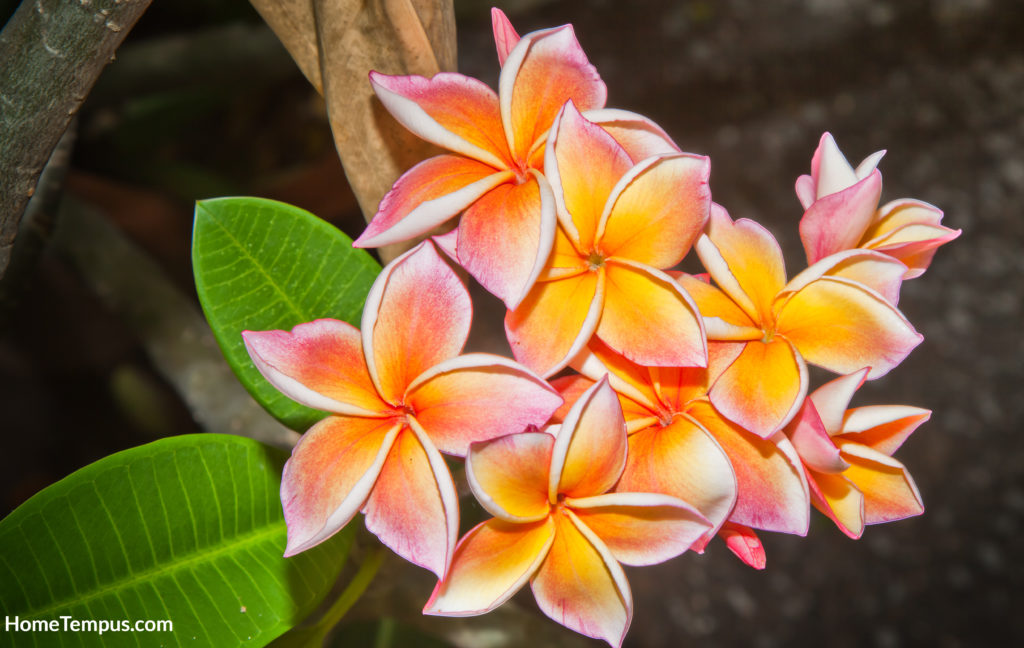
Plumeria rubra is a deciduous tree from the genus Plumeria. Originally a Mexican native, plumerias now grow all over the world in tropical climates. They are best known as flowers Hawaiians use to make leis.
Frangipani trees are often grown around temples and cemeteries. Mexican frangipani grows to eight meters tall and has large, very fragrant flowers that are often red but can also be yellow, pink and white.
Frangipani thrives in warm, dry and frost-free climates. Plant them in a well-draining mostly sandy soil where they can get at least six hours of sun.
Laelia Orchid (Laelia Rubescens)
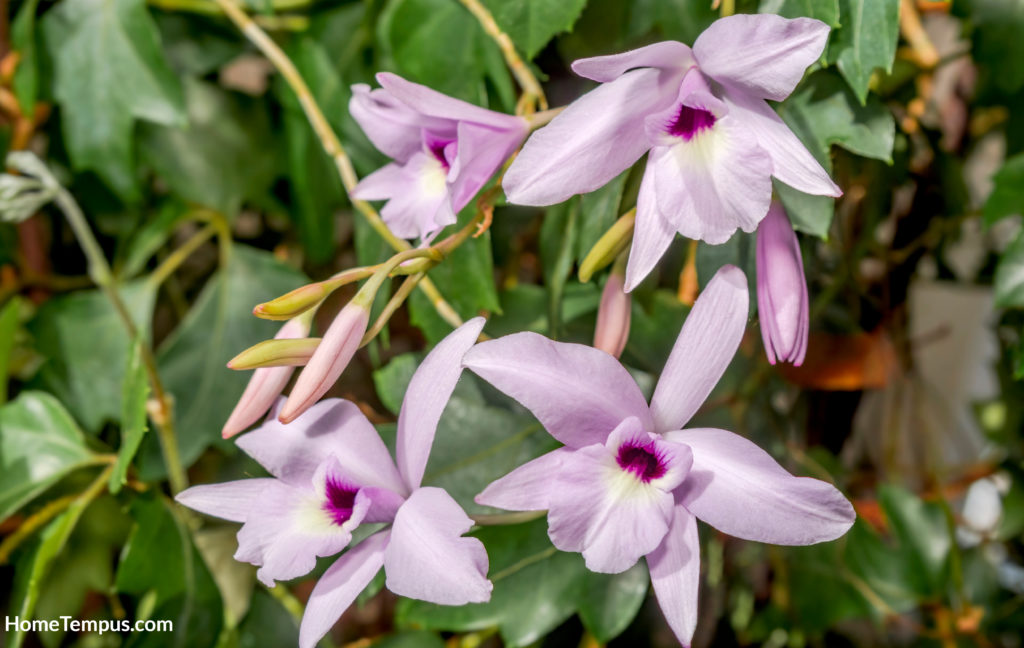
Laelia rubescens is a Mexican native species of orchid also known as the Rosy-Tinted Laelia. It grows epiphytic on tall trees or rocks, in dry regions and wooded areas in deciduous dry forests at an altitude between 100 and 1700 meters above sea level.
The Rosy Tinted Laelia blooms in the autumn and winter on a new 90 cm long, terete inflorescence. The flowers are fragrant, purple, white or pink, 3 to 7 cm in diameter clustered at the apex.
They sometimes close at night. The fragrance is most prominent on sunny days.
Mexican Lady’s Slipper (Pedilanthus Macrocarpus)
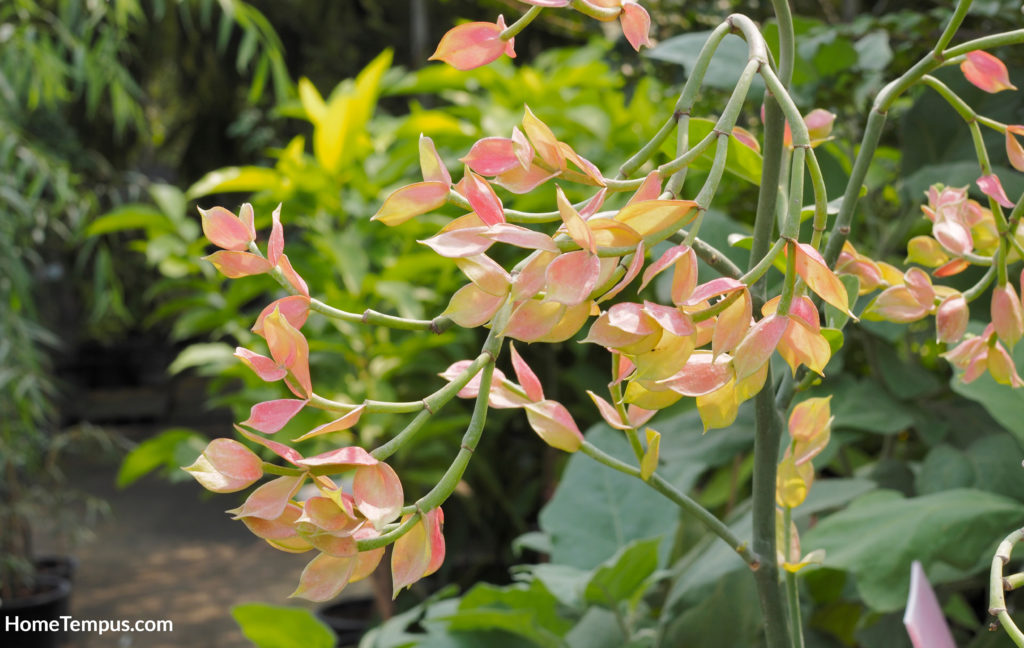
Succulent evergreen, Mexican Lady’s Slipper is native to the Sonoran Desert in north-western Mexico and Baja California. Mexican lady’s slipper is well adapted to arid, hot climate and prolonged periods of drought.
It grows in grassy clumps, 3-4 feet tall, and has lovely yellow or orange flowers that look like little slippers. Hummingbirds love them.
Pedilanthus blooms from spring to autumn. Plant it in rich, well-draining soil.
Recommended Reading
Flowers That Start With B | 21 Beautiful Bright Flowers
Pineapple Sage (Salvia Elegans)
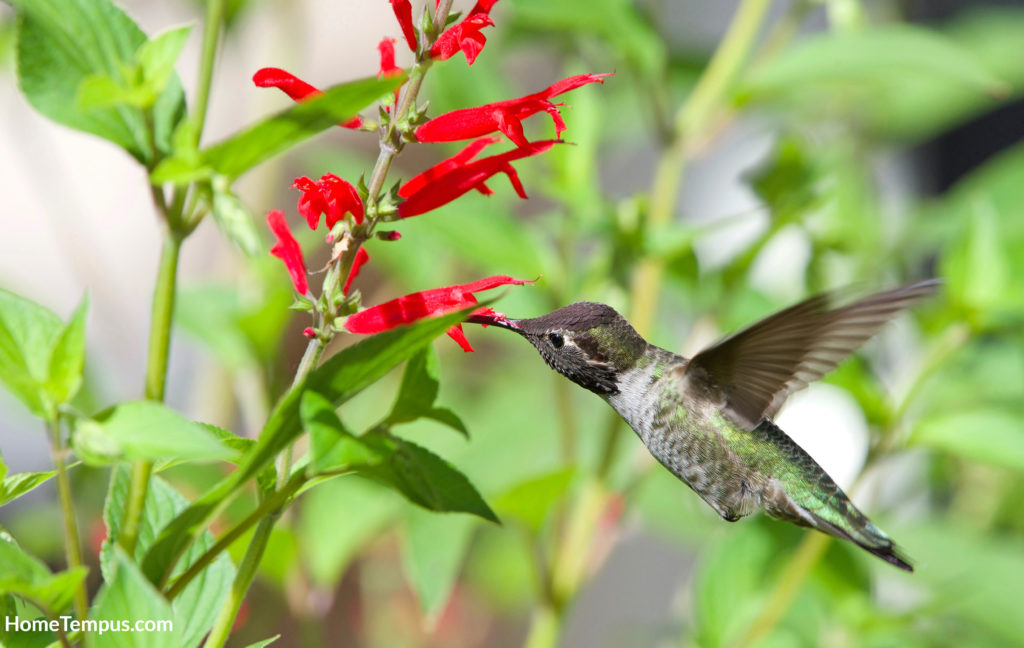
Pineapple sage is a perennial shrub native to Mexico. It grows in pine-oak forests in the Sierra Madre del Sur Mountains between 6,000 and 9,000 ft.
Bright green leaves of pineapple sage have a pleasant scent of the pineapple when crushed. Pineapple sage flowers late in the season. Bright scarlet red 1-2 inch long flowers are tubular and are attractive to hummingbirds.
Plant pineapple sage in moist, well-drained soil in full sun. Keep regularly watered or it will drop leaves.
Mexican Honeysuckle (Justicia Spicigera)
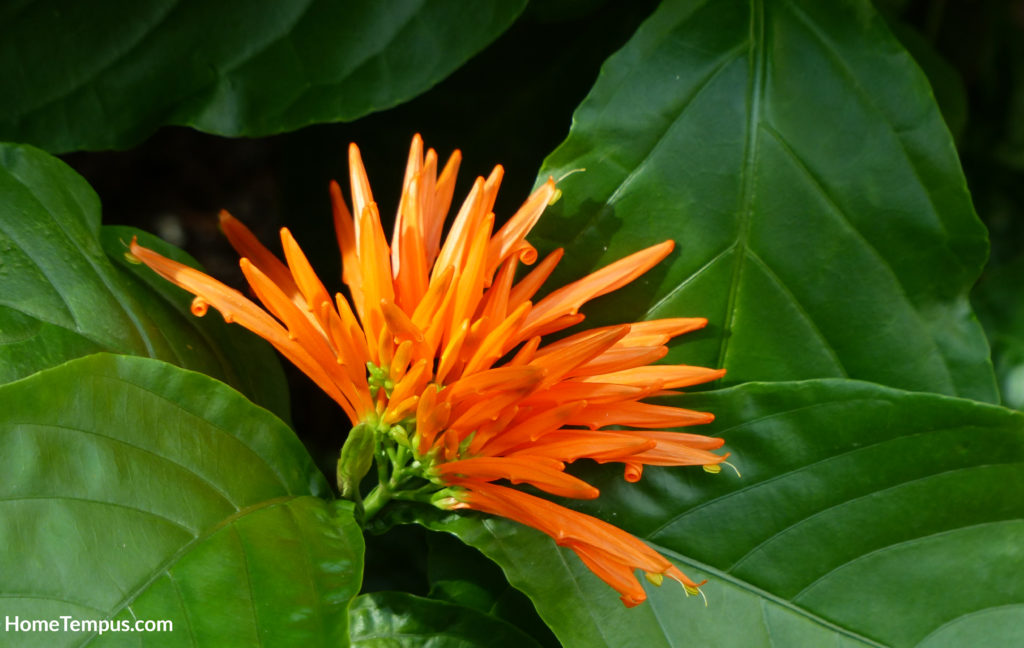
Mexican honeysuckle is an evergreen shrub (not a vine like a common honeysuckle) with tubular orange 1-1/2″ long flowers. The shrub grows up to three feet tall and wide.
In most places Mexican honeysuckle is evergreen, blooming throughout winter. It tolerates any soil. Plant in full sun and water sparingly, it is fairly drought tolerant.
Flowers are fragrant and leaves are large and velvety. Butterflies, bees and hummingbirds love Mexican honeysuckle.
Poinsettia (Euphorbia Pulcherrima)
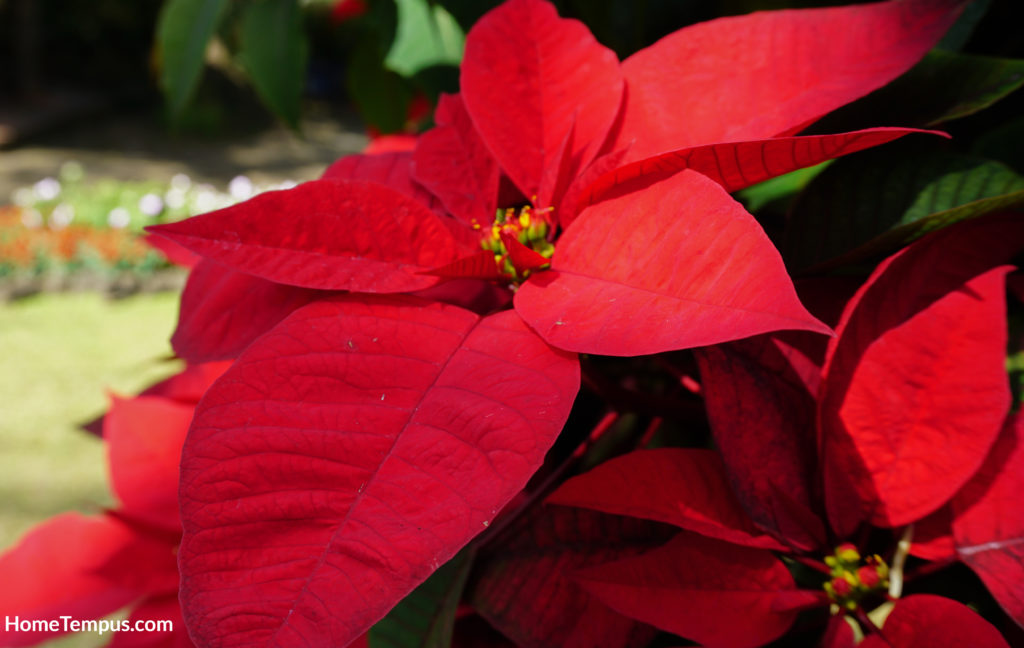
It comes as a surprise to many that poinsettia, so closely associated with Christmas, is native to Mexico. It is now cultivated all over the world in the tropical climate and is widely used as a Christmas decoration.
Poinsettia is a semi-evergreen shrub with large, ovate bluntly toothed leaves and tiny yellow flowers with leaf-like bright red bracts. In its native habitat, poinsettia can grow to 10 feet, but if grown in a pot it will not grow over three feet. If you live in a tropical climate, plant your poinsettia in the garden after the holidays.
Poinsettia likes partial shade and an average temperature of 60 degrees or higher. Do not let it dry out, but try not to overwater.
Recommended Reading
Flowers That Start With M | 17 Magnificent Flowers
Flowers That Start With D | 21 Stunning Flowers
Mexican Hat Flower (Ratibida Columnifera)
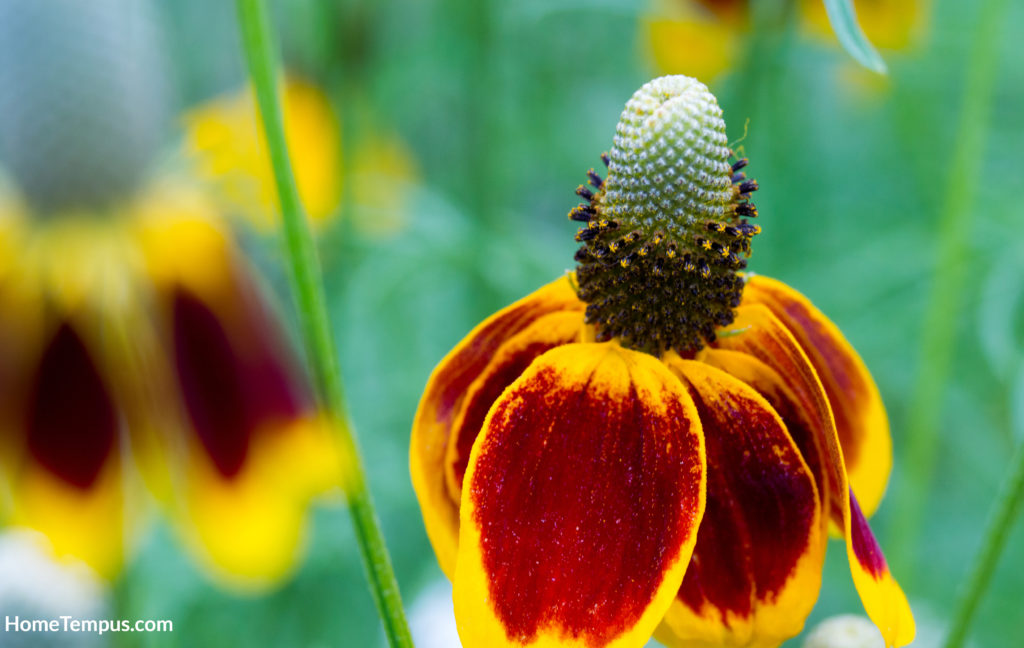
Mexican Hat is a fast-growing upright, clump-forming perennial wildflower with lovely golden yellow or sometimes rust-red flowers resembling daisies. Flowers grow on 3-7 drooping leafless stalks around a long central disk, resembling a sombrero.
Flowers bloom prolifically from the early summer into the fall. A clump-forming perennial that doesn’t have dense foliage, the Mexican hat plant usually grows in groups in a cottage and wildflower gardens. They grow up to 3 feet.
Mexican hat is very drought tolerant. Grow it in full sun in loamy, sandy, well-drained soil. This plant’s pollen attracts bees and butterflies and its seeds feed birds.
Mexican Marigold (Tagetes Erecta)
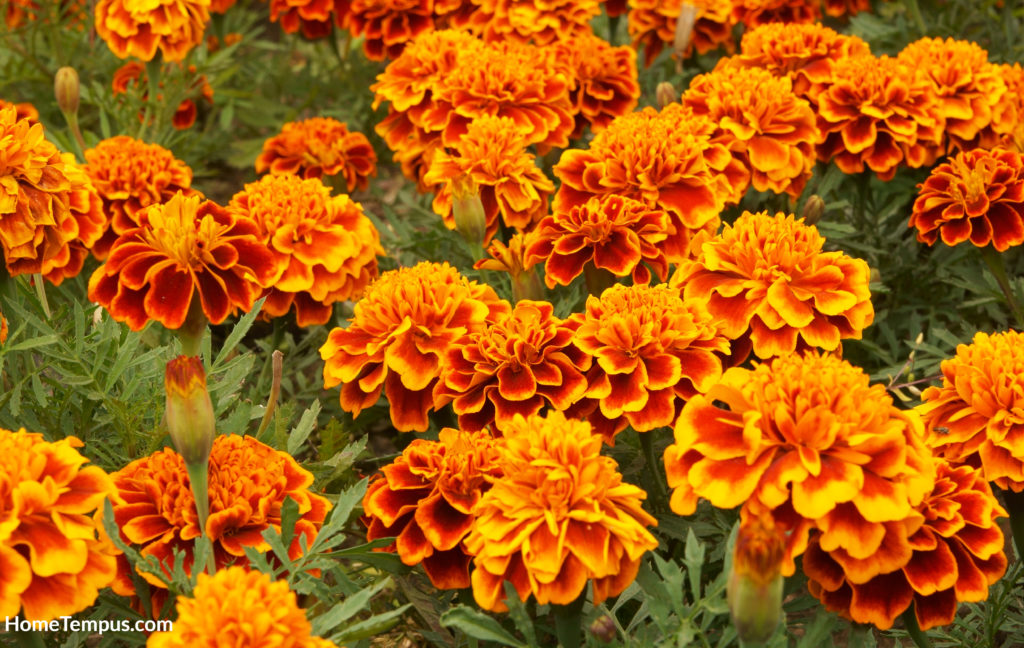
Mexican Marigold, also called cempasúchil, or Aztec marigold, is an evergreen shrub with aromatic foliage and bright orange fragrant flowers that bees and butterflies love. The Aztecs used to collect the wild marigolds, but were cultivated them as well.
They used them in religious ceremonies as well as for decorative and healing purposes. Marigold flower, the cempasúchil is also named the “flower of the dead” in Mexico and is used in the Día de Muertos celebration to decorate altars and tombs.
Marigolds have been used since pre-Hispanic times for their medicinal value, especially for age-related eye diseases. In some parts of Mexico marigold is used for stomach pain, diarrhoea, liver problems, indigestion and vomiting.
The flowers are 3 to 6 inches in diameter, growing on green stems and bright green fern-like foliage. Mexican marigold blooms throughout fall and winter.
It grows up to 4 feet tall. This Mexican native is very popular and grown everywhere.
Grow Mexican marigold in full sun, in loamy, sandy, well-drained soil. This plant is mildly toxic to humans and it repels deer.
Mexican Morning Glory (Ipomoea Hederacea)
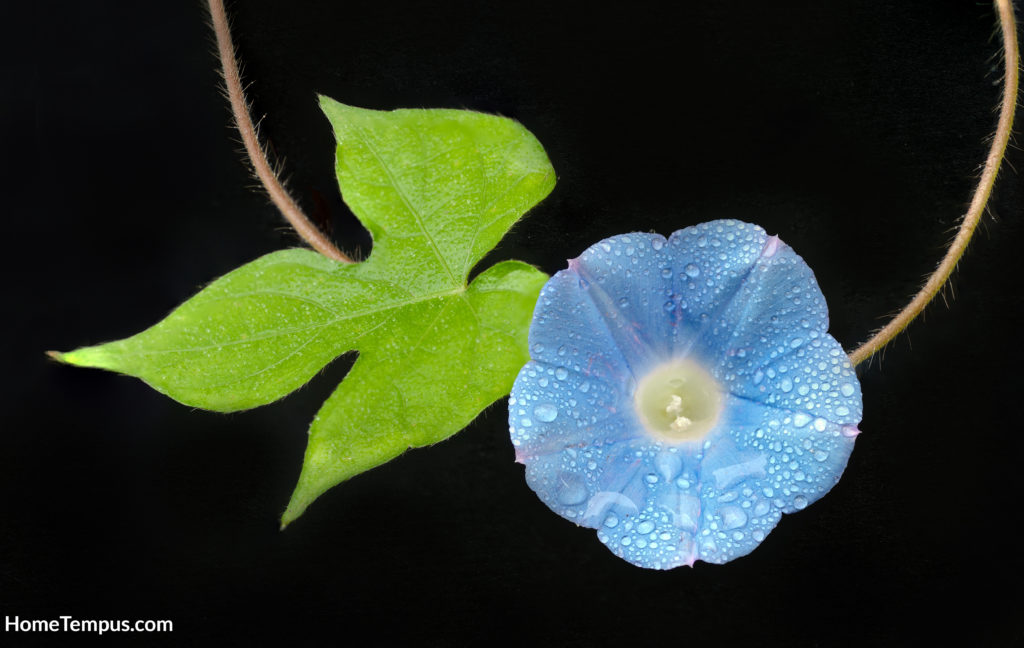
Mexican Morning Glory, also called the ivy-leaved morning glory, is a flowering climbing vine in the bindweed family. The trumpet-shaped flowers range from blue to rose-purple and have a white throat.
Mexican morning glory blooms throughout the summer until late fall. They open in the early morning and fade away by the evening. Morning glory thrives in arid environments.
Mexican morning glory is an annual cultivated for the exceptionally beautiful, delicate, ethereal blooms. Usually they do best growing on protected house walls, but fade quickly.
Can grow in any garden soil and can be grown in pots as well. They need support for twining, such as trellis, a net or stakes.
Mexican morning glories can grow up to 4 meters high, higher than the common morning glory.
Recommended Reading
Flowers That Start With E | 20 Exquisite Flowers
Mexican Passion Flower (Passiflora Mexicana)
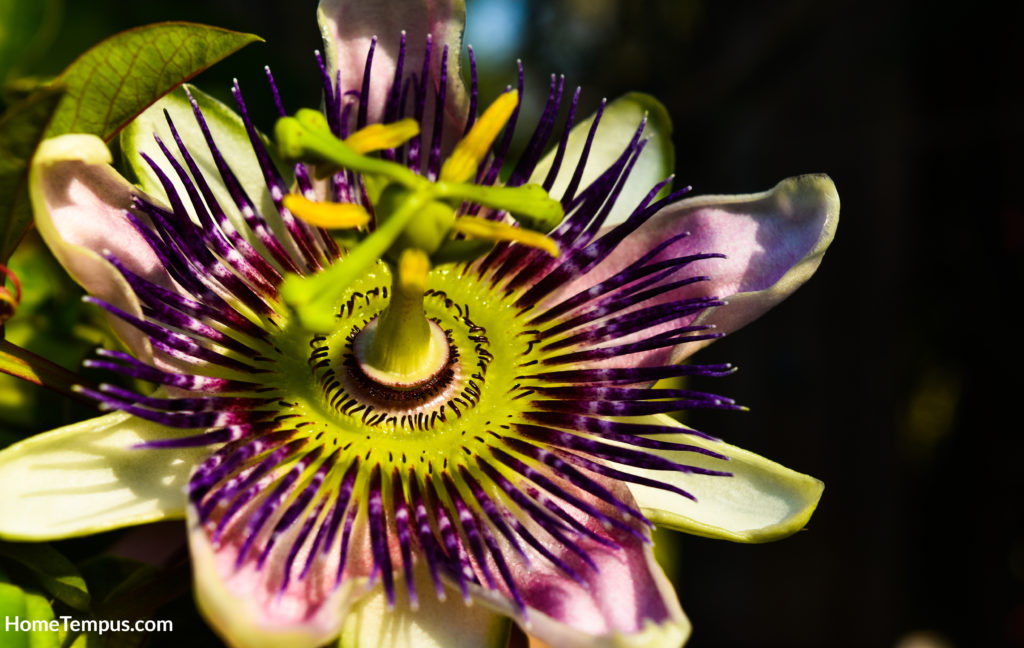
Mexican Passionflower is a perennial vine that can grow up to 24 feet. It grows wild, vining through the trees and bushes in riparian areas and mesquite forests of Mexico.
It is also extensively cultivated and grown in gardens for its strange but fascinating flowers. Spectacularly beautiful flowers can be red, green or purple and bloom from July to September.
Flowers smell like mothballs and produce edible fruits widely used in Mexican dishes. The round-tipped, bilobed leaves are also very attractive.
Mexican passion flower is used in herbal medicine as a gentle, natural sedative.
Chocolate Cosmos (Cosmos Atrosanguineus)
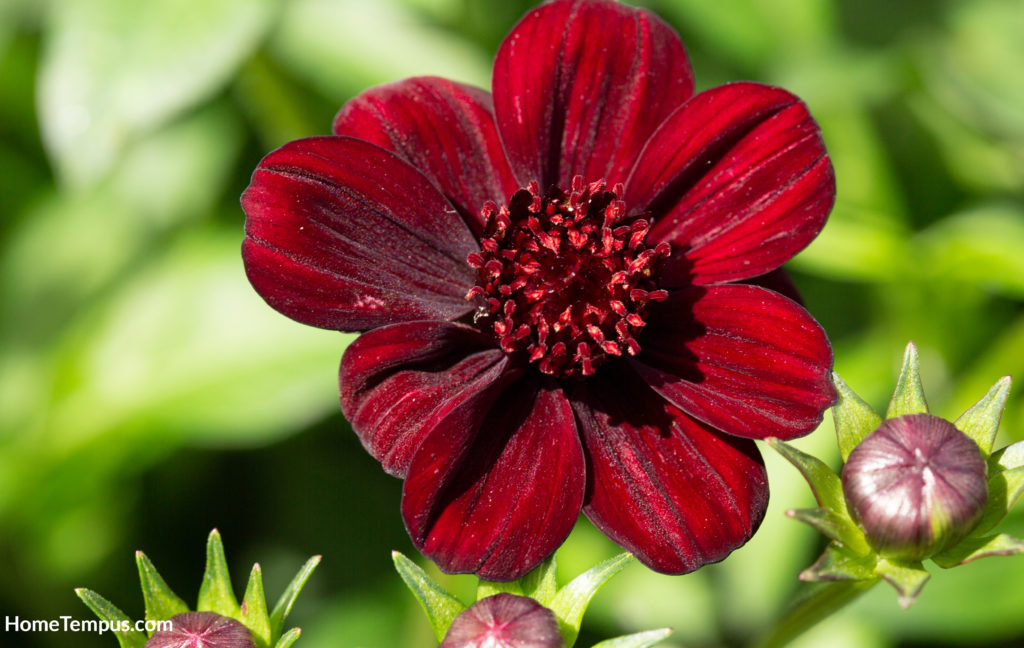
Chocolate Cosmos is a perennial herbaceous plant that grows up to 60 cm. It has a fleshy tuberous root.
Chocolate cosmos has beautiful velvety dark crimson flowers two inches in diameter that smell like chocolate. It does not mean that they are edible!
Chocolate Cosmos blooms profusely from summer through fall and is pretty rare and highly sought after by gardeners for its beauty. It is pretty common in Mexico where it grows wild.
Plant chocolate cosmos in full sun, in well-drained moderately fertile and moderately moist soil. It is fairly drought-tolerant, so do not overwater.
Chocolate cosmos grows well in pots so you can enjoy its chocolate fragrance on your porch. It is beloved by bees, butterflies and hummingbirds.
Mexican Poppy (Argemone Ochroleuca)
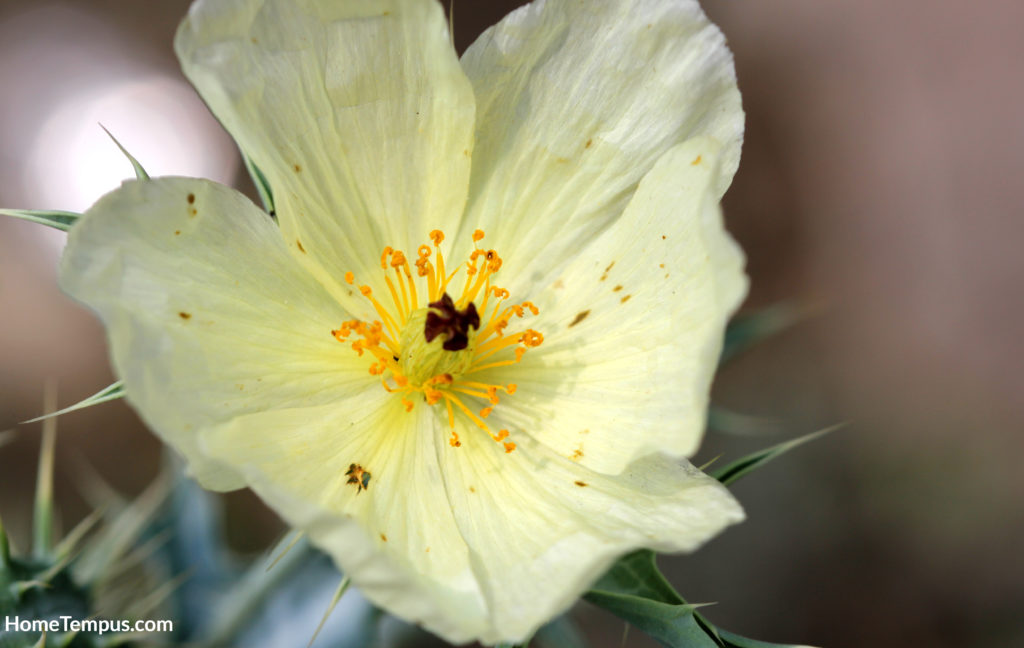
Mexican poppy is a flowering plant also known as pale Mexican prickly poppy. It is native to Mexico. It is very invasive and is now spread all over the world where it is considered a dangerous weed.
Mexican poppy grows up to one meter in height, has very prickly stems, sticky toxic sap and very pretty 4.5 centimetres across white or pale yellow flowers. It blooms in spring.
It is usually found growing wild by the roadsides, degraded land, over-grazed pastures and sandy stream beds. Mexican poppy is poisonous to stock but animals mostly stay away from it because it is so prickly.
While it is sometimes grown in pots as an ornamental because of its pretty yellow flowers, it is not very popular. In many places Mexican poppy is considered an invasive weed but it is difficult to eradicate because its seeds can lay dormant for years.
Recommended Reading
Flowers That Start With N | 15 Nice Flowers To Choose
Jacaranda (Jacaranda)
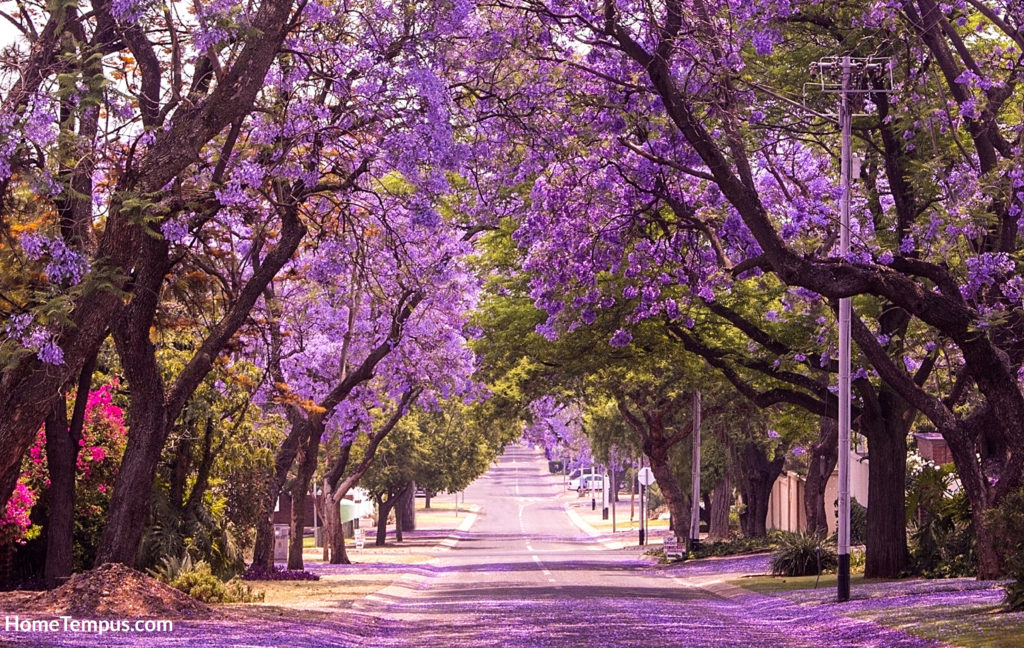
Jacaranda is a genus of flowering plants with 49 species. It is native to Mexico and other tropical and subtropical areas of the Americas.
Because of its spectacular beauty it is now grown as an ornamental tree all over the world. Jacaranda is a shrub or a large tree that can grow up to 30 meters tall.
The flowers grow in large panicles or clusters that range in colour from blue to purple and some are even white. Jacaranda is semi-evergreen or deciduous, depending on the location.
It does not bloom until it is eight years old. It blooms in late spring and early summer, but in perfect conditions, it can bloom any time of the year.
Jacarandas are grown as decorative trees along the city streets, in parks or homes. They produce a lovely shady canopy and when they bloom, the entire tree is covered in fragrant blooms and the street or ground below are covered in purple petals.
Desert Zinnia (Zinnia Acerosa)
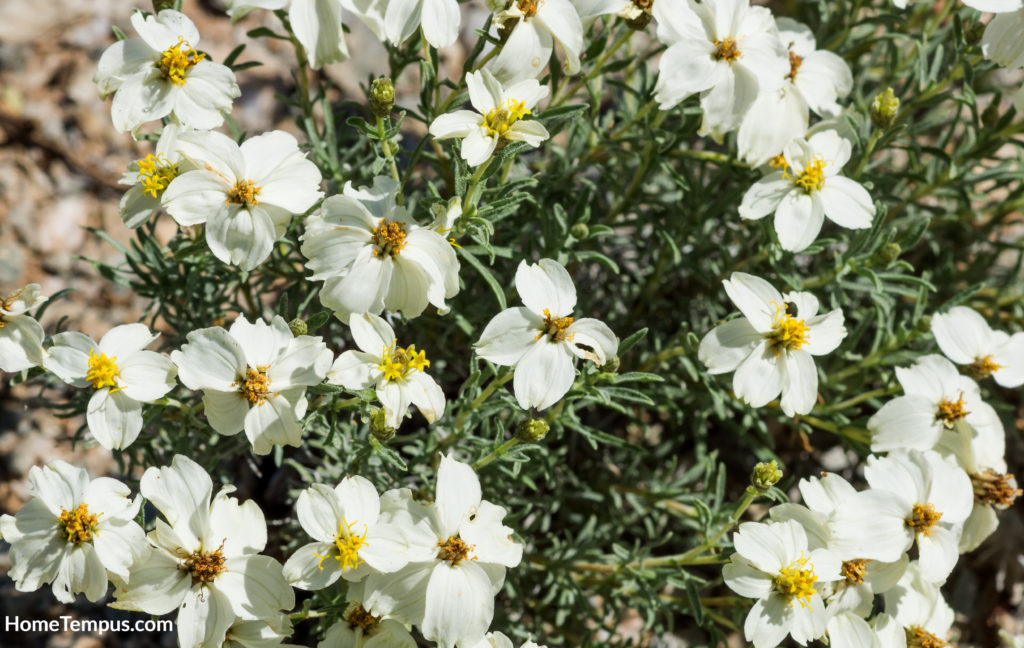
Desert zinnia is a low-growing perennial plant native to Northern Mexico and the South-western United States. It is very popular with gardeners because of its long bloom and low need for water.
In the wild, it can be found in the most inhospitable desert areas. The desert zinnia grows to about four inches high and about 15 inches wide.
It has lovely orange cone-shaped flowers about one inch in diameter. It blooms in summer and its needle-like tiny leaves die back in the winter, looking like dormant grass.
Once the spring comes, they reliable come back year after year. Plant desert zinnia in full sun in sandy, well-drained soil.
It almost does not require any water, but if you do not have rain for months, give it a bit of soaking occasionally.
Dahlia (Dahlia)
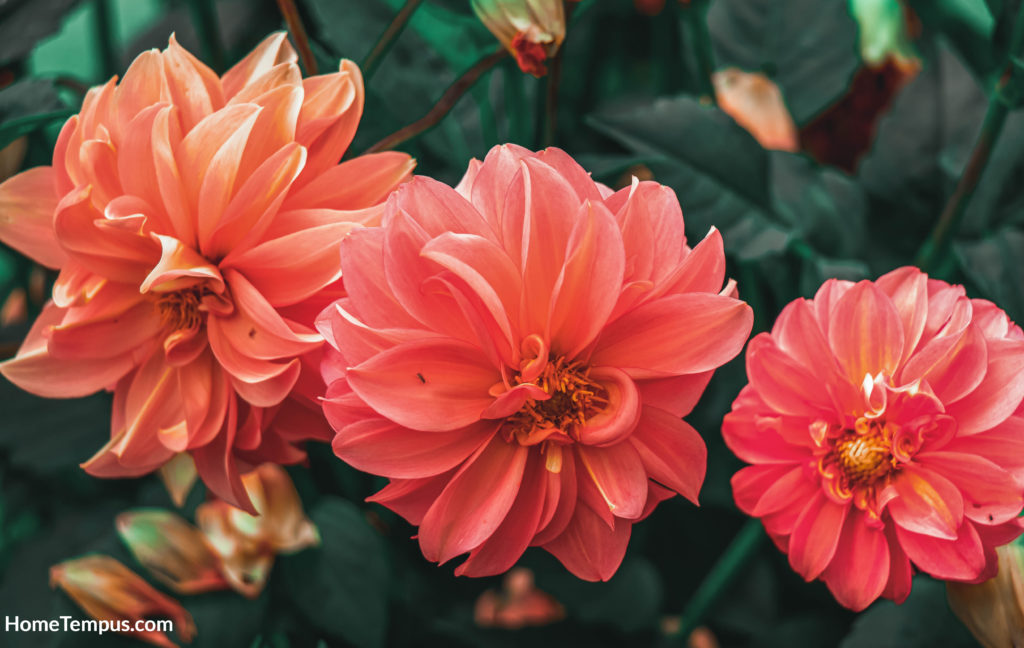
A national flower of Mexico, Dahlia genus includes 43 species of plants that are native to Mexico and Central America. Some 35 are endemic to Mexico.
The Aztecs domesticated, crossed, cultivated and reproduced dahlias hundreds of years ago and created incredible diversity of plants that are grown today in gardens all over the world. There are still wild species living in Mexico.
Dahlias are tuberous herbaceous plants that grow up to 1.5 meters in height. They have glossy dark green leaves and very pretty and showy flowers that come in a huge range of colours.
Flowers can be simple or compound and bloom in summer and early fall. Dahlias thrive in full sun away from the wind.
As they are tall flowers you will need to support them by a stake so that they do not break. Water generously, dahlia does not like to dry out.
Plant in a free draining rich soil.
Recommended Reading
Flowers That Start With O | 17 Outstanding To Choose
Yucca (Yucca Baccata)
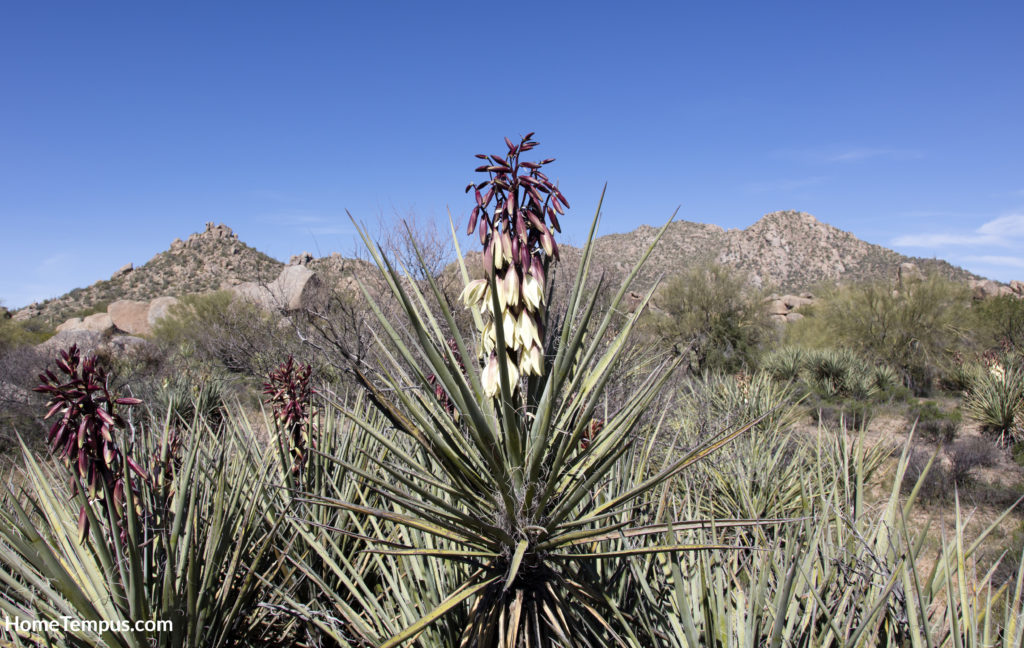
Yucca baccata or banana yucca is a perennial succulent native to the deserts of north-western Mexico and the south-western United States. It grows wild in dry plains and hilly grasslands.
Usually a stem-less single plant, yucca sometimes grows in large clumps with reclining short stems. The leaves are narrow and spiky and up to 30 inches long.
Yucca produces showy flowers on 40-inch tall stems. Flowers are white, very large, fleshy and pendant and have a reddish tinge. Yucca blooms from April to the end of July.
Yucca fruits resemble bananas. You can have them baked and they will taste like sweet potatoes, but Mexican Indians prefer eating flowers.
Yucca grows best in full sun, in dry sandy or rocky soil. It requires very little water.
Heliconia (Heliconia)
![]()
Heliconia is a genus of flowering perennial plants in the family Heliconiaceae. Most of the 194 species are native to Mexico and the tropical Americas. Heliconia is related to bananas and is popularly called platanillo because its leaves resemble banana leaves.
Because of the shape of the flowers, they are also called ‘lobster claws.” Heliconias grow up to 15 feet (4.5 m.) tall in their natural habitat.
They are not at all frost-hardy. Leaves are green, glossy, oval, and shaped like a paddle. They grow upright, and thick flower stems grow from their centre.
Bright red, orange or yellow flower bracts can be erect or pendulant. Flowers are tiny and insignificant.
Heliconias thrive in full sun or partial shade in well-draining fertile and moist soil. The soil must be well-draining as well as fertile and moist.
Hummingbirds and butterflies drink the nectar from the heliconia’s flowers.
Recommended Reading
Flowers That Start With F | List of 22 Fabulous Flowers
Conclusion
With Mexico’s wonderful and diverse climate, it is no surprise that nature produces a profusion of flowering plants. Mexican flowers are now cultivated all over the world.
This is mostly due to the Spanish conquistadores who took their native flowers to other countries while conquering the world. Even if you do not have the right climate, you can very likely grow many Mexican flowers in a pot indoors on in a greenhouse.

